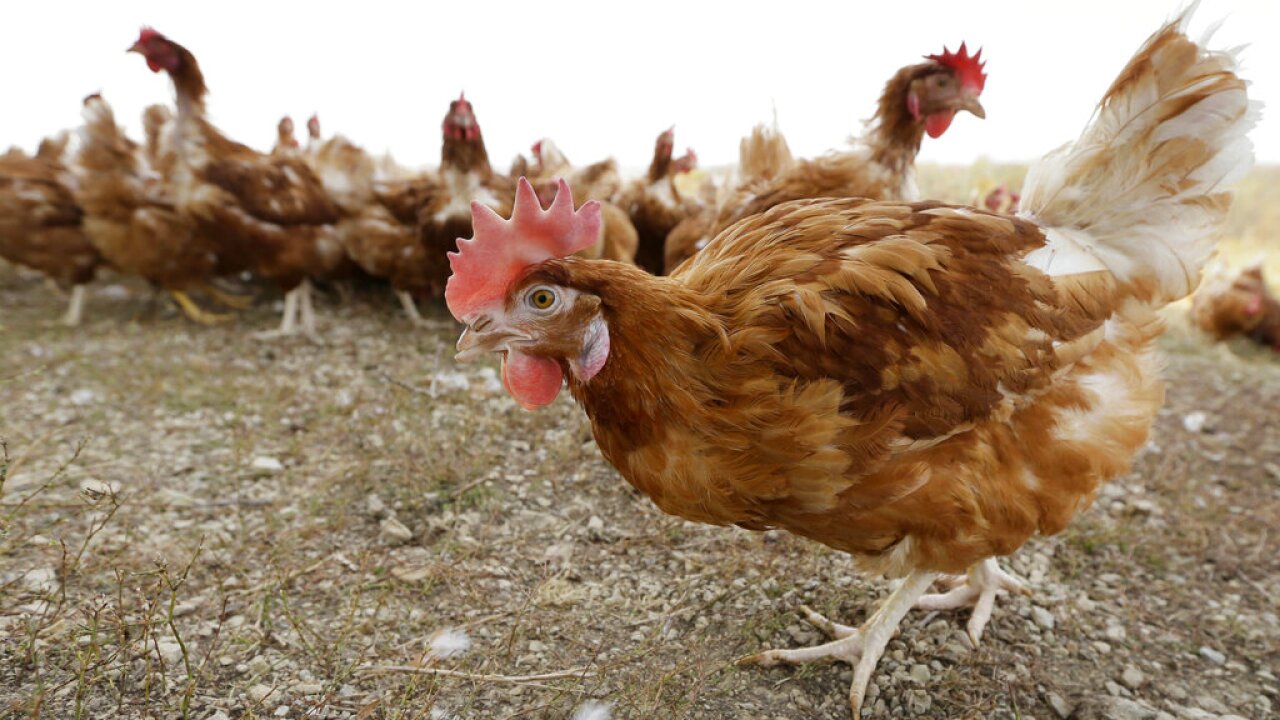GREAT FALLS — The Montana Department of Livestock (DOL) is asking Montanans to be aware that highly pathogenic avian influenza (HPAI) has been diagnosed in domestic poultry and wild birds in 18 states to date in 2022. HPAI spreads rapidly and is associated with severe disease and high death loss.
Among the states reporting confirmed outbreaks are South Dakota, Nebraska, Kansas, Illinois, Wisconsin, Indiana, Florida, and New Hampshire. There have not been any reported cases in Montana at this point.
About 570,000 chickens in Nebraska are set to be destroyed in an effort to fight an outbreak, according to Scripps. The Nebraska Department of Agriculture and the USDA announced Tuesday that a flock of chickens was affected by a “highly pathogenic avian influenza.”
DOL said in a news release on Wednesday, March 23, 2022, that migratory waterfowl are the primary source for avian influenza (AI). The virus is shed in the feces, saliva, and other respiratory secretions of infected birds. Wild birds can carry the virus and appear healthy. Domestic poultry become infected through direct contact with infected wild birds, or through contact with contaminated objects, equipment, or the environment.
“Because of the high mortality rate and highly contagious nature of the virus, we are asking Montana’s poultry producers to take action to keep their flocks healthy,” said Dr. Tahnee Szymanski, Assistant State Veterinarian. “Many biosecurity precautions, while inconvenient, can be done with no additional expense to reduce the risk of AI.”
Bird owners should implement increased biosecurity measures for flocks, including housing birds indoors to the extent possible and preventing wild birds from accessing food and water sources for domestic poultry. Other biosecurity measures include restricting visitor access to your flock, not sharing equipment with other poultry producers, practicing good sanitation, wearing clean clothes and footwear when caring for birds, and isolating new birds prior to introduction into a flock.
The most common presentation of AI is sudden death, but birds may also exhibit sneezing, coughing, nasal discharge, lethargy, poor appetite, huddling, depression, decreased egg production, swelling of the eyes, head or neck, and discoloration of the wattle, comb, or legs.
Sick birds should be reported to your veterinarian or directly to DOL at 406-444-2976. AI is a reportable disease in Montana and early detection is critical to minimize disease spread. Affected flocks are quarantined and movement controls and testing of domestic birds are implemented in a zone around the affected flock.
The disease is caused by an Influenza A virus which is divided into two groups: High Path (HP) and Low Path (LP) avian influenza. LP strains are less severe and may even go unnoticed in infected birds.
According to the U.S. Centers for Disease Control & Prevention, the recent HPAI detections are not a public health concern. No human cases have been detected in the United States and poultry remains safe to eat. As a reminder, the proper handling and cooking of all poultry and eggs to an internal temperature of 165 ˚F is recommended as a general food safety precaution.
For more information on HPAI detections in the US, visit the APHIS website.
TRENDING ARTICLES
- FAIL: trying to drive across Yellowstone River
- GF woman charged with stealing a car
- 'Black H3arts' MC donates GF Animal Shelter
- Preview of new apartment complex in GF
- Montana teen siblings die in crash


